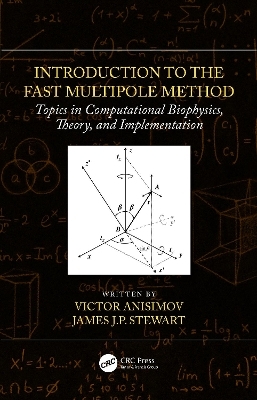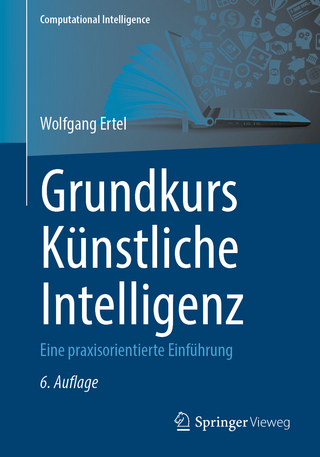
Introduction to the Fast Multipole Method
Crc Press Inc (Verlag)
978-1-4398-3905-8 (ISBN)
Introduction to the Fast Multipole Method introduces the reader to the theory and computer implementation of the Fast Multipole Method. It covers the topics of Laplace’s equation, spherical harmonics, angular momentum, the Wigner matrix, the addition theorem for solid harmonics, and lattice sums for periodic boundary conditions, along with providing a complete, self-contained explanation of the math of the method, so that anyone having an undergraduate grasp of calculus should be able to follow the material presented. The authors derive the Fast Multipole Method from first principles and systematically construct the theory connecting all the parts.
Key Features
Introduces each topic from first principles
Derives every equation presented, and explains each step in its derivation
Builds the necessary theory in order to understand, develop, and use the method
Describes the conversion from theory to computer implementation
Guides through code optimization and parallelization
Victor Anisimov is an Application Performance Engineer at the Argonne Leadership Computing Facility. He holds a Ph.D. degree in Physical Chemistry from the Institute of Chemical Physics of the Russian Academy of Sciences (1997), which was followed by 5 years of computational chemistry software development with Fujitsu, where his team developed the linear scaling semi-empirical quantum chemistry code LocalSCF that expanded the limits of the approximate electronic structure theory to millions of atoms. He performed postdoctoral work at the University of Maryland at Baltimore (2003-2008), and at the University of Texas at Houston (2008-2011), improving molecular dynamics methods and contributing to the CHARMM code. In the National Center for Supercomputing Applications at the University of Illinois at Urbana-Champaign (2011-2019), Dr. Anisimov held the position of Senior Research Scientist, conducted application support for petascale resource allocation teams on the Blue Waters supercomputer, optimized various application codes, and improved the performance and scaling profiles of coupled cluster singles and doubles electronic structure method in NWChem code. Dr. Anisimov works on the faithful representation of long-range electrostatic interactions in large-scale molecular simulations, near-neighbor communication algorithms, and linear-scaling methods. He specializes in performance optimization and fidelity improvements of electronic structure and soft matter simulation application codes on exascale platforms. James J. P. Stewart pioneered the use of semiempirical quantum chemistry methods in research and teaching. After teaching at the University of Strathclyde in Glasgow, Scotland, he became a researcher at the United States Air Force Academy, then taught as an adjoint professor at the University of Colorado. For the past 30 years, his company, Stewart Computational Chemistry, has been marketing his program, MOPAC, which now has over 30,000 licensed users and groups worldwide. Dr. Stewart has authored over 150 research papers and his works have been cited over 38,000 times.
1. Legendre Polynomials 2. Associated Legendre Functions 3. Spherical Harmonics 4. Angular Momentum 5. Wigner Matrix 6. Clebsch–Gordan Coefficients 7. Recurrence Relations for Wigner Matrix 8. Solid Harmonics 9. Electrostatic Force 10. Scaling of Solid Harmonics 11. Scaling of Multipole Translations 12. Fast Multipole Method 13. Multipole Translations along the z-Axis 14. Rotation of Coordinate System 15. Rotation-Based Multipole Translations 16. Periodic Boundary Condition
| Erscheint lt. Verlag | 1.1.2021 |
|---|---|
| Zusatzinfo | 5 Tables, black and white; 73 Illustrations, black and white |
| Verlagsort | Bosa Roca |
| Sprache | englisch |
| Maße | 178 x 254 mm |
| Gewicht | 966 g |
| Themenwelt | Mathematik / Informatik ► Informatik ► Theorie / Studium |
| Naturwissenschaften ► Biologie | |
| Naturwissenschaften ► Chemie ► Physikalische Chemie | |
| Naturwissenschaften ► Physik / Astronomie ► Angewandte Physik | |
| Naturwissenschaften ► Physik / Astronomie ► Quantenphysik | |
| ISBN-10 | 1-4398-3905-0 / 1439839050 |
| ISBN-13 | 978-1-4398-3905-8 / 9781439839058 |
| Zustand | Neuware |
| Informationen gemäß Produktsicherheitsverordnung (GPSR) | |
| Haben Sie eine Frage zum Produkt? |
aus dem Bereich


